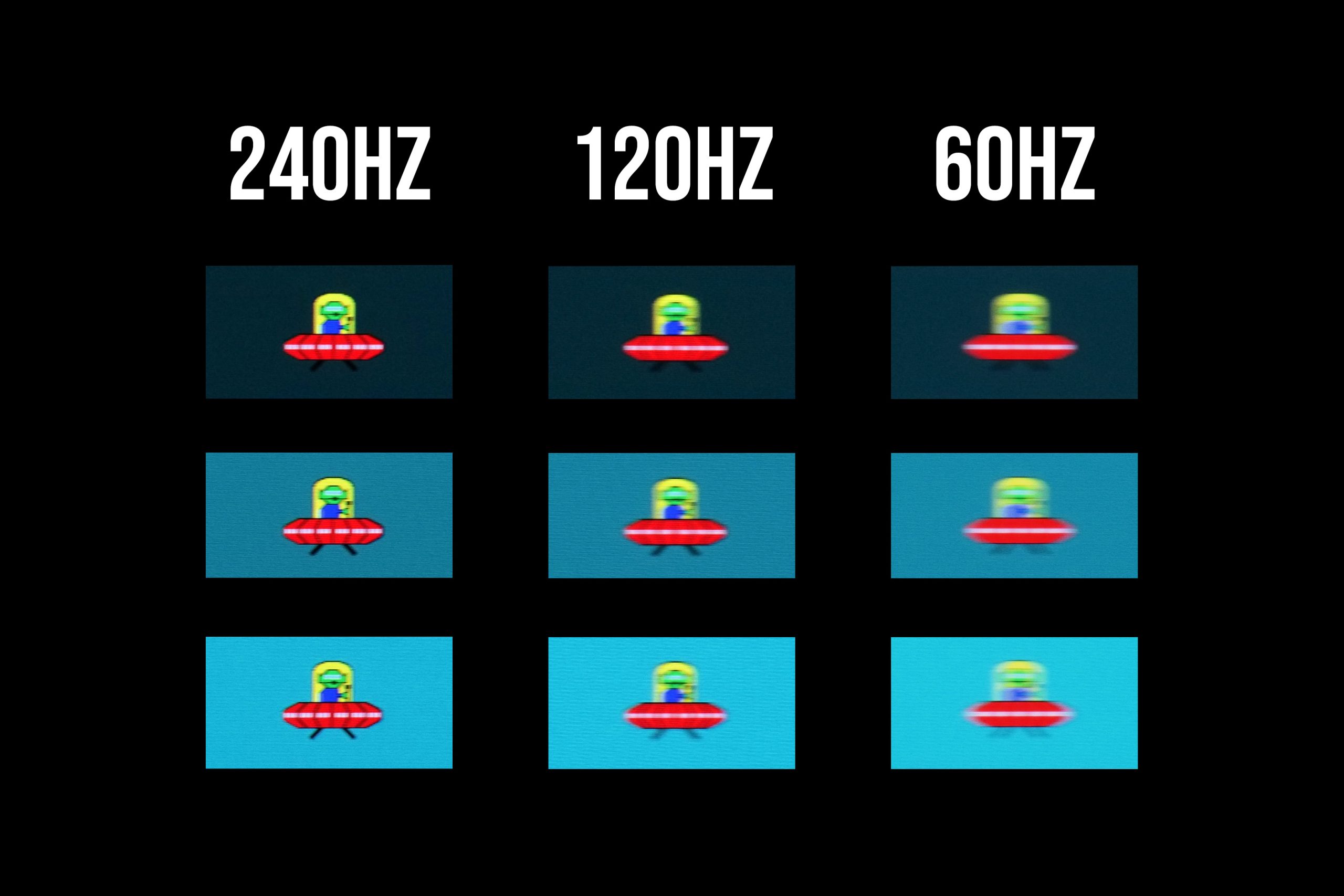Monitor response time testing is a new addition to our reviews, where we use the Open Source Response Time Tool (OSRTT), developed by TechTeamGB. This measures grey-to-grey response times and presents the results in a series of heatmaps, the style of which you may be familiar with from other reviews.
Initial Response Time is the time taken for the panel to transition from one colour to another, where lower values are better. We present the initial response time, so overshoot is not taken into account and is measured separately. We use a fixed RGB 5 tolerance for each transition.
Overshoot is the term given for when a monitor's transition exceeds or goes beyond its target value. So if a monitor was meant to transition from RGB 0 to RGB 55, but it hits RGB 60 before settling back down at RGB 55, that is overshoot. This is presented as RGB values in the heatmaps – i.e. how many RGB values past the intended target were measured.
Visual Response Rating is a metric designed to ‘score' a panel's visual performance, incorporating both response times and overdrive. Fast response times with little to no overshoot will score well, while slow response times or those with significant overshoot will score poorly.
We test the 27QHD240 at 240Hz, 120Hz and 60Hz. There are no user-configurable overdrive modes for this monitor.
As expected from an OLED monitor, response times are stellar across the board. At every resolution tested we're seeing average grey-to-grey response times below 1ms, with minimal overshoot – some of which can be explained by luminance variation anyway, which is typical of OLED monitors.
Of course, these response times don't mean there won't be any motion blur at lower refresh rates – if you're playing a game that's locked to 60FPS for instance you will still experience blur due to the grab-and-hold nature of OLED displays, but for competitive multiplayer games where you can hit 240Hz, the overall clarity of the image is absolutely fantastic.
That's illustrated by the above pursuit camera images, using the Blur Busters UFO test. There's a noticeable increase in clarity at 240Hz, even compared to 120Hz, while 60Hz looks distinctively less lucid – despite the response times being near-enough identical at all three refresh rates.
Putting those results into context, the 27QHD240 sits right at the top of our response time chart, grouped closely with the other OLED monitors we've tested. The next-best LCD is over three times slower, which goes to show the inherent advantage OLED screen can offer in the gaming market.
 KitGuru KitGuru.net – Tech News | Hardware News | Hardware Reviews | IOS | Mobile | Gaming | Graphics Cards
KitGuru KitGuru.net – Tech News | Hardware News | Hardware Reviews | IOS | Mobile | Gaming | Graphics Cards





